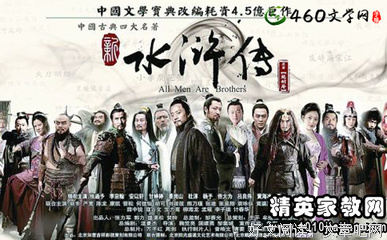
《Good Strategy Bad Strategy》是一本由Richard Rumelt著作,Crown Business出版的Hardcover图书,本书定价:USD 28.00,页数:336,特精心从网络上整理的一些读者的读后感,希望对大家能有帮助。
《Good Strategy Bad Strategy》精选点评:
●Good strategy requires leaders who are wiling and able to say no to a variety of actions and interests. Strategy is at least as much about what an organization dose not do as it it about what it dose.
●泛泛而談
●再推荐另一本好书。好的策略往往隐藏在很多被认为是理所当然的现象中;要对很多发展的可能性的引诱说“不”是很难的,很多企业就栽在说“是”的多元化发展上面;好的策略不只要回答“什么”,而且要回答“为什么”和“如何做到”;口号不等于策略;对于挑战和阻拦的分析,和发展策略一样重要。
●尼玛。。我在给出版社翻译这本书啊!!!!!
●很有启发~
●老板推荐读的…
●4.5. Worth to read.
●本人的第一本纯英文书籍,推荐并纪念一下。
●看看
●目前为止读过的最好的战略书籍。
《Good Strategy Bad Strategy》读后感(一):策略的反面也应该是策略
策略首先是一种选择,只有在资源不足的时候才需要选择,因此才有策略。如果一个人或者机构有无限的资源,那他想怎么做都行,所以是不需要策略的。
策略必定是选择放弃一些东西,把资源集中到另外一些东西上面去。因此一个策略的反面依然是一个策略,只是取舍的东西互换了而已。这也是判断策略是不是策略的一个方法。比如:「努力学好英语」是一个目标,但不是一个策略,因为它的反面「不学好英语」显然不是一个策略;「今年把玩游戏的时间,全部用来学英语」是一个策略,你放弃是玩游戏,选择了学英语,这个策略的反面「今年把学英语的时间,全部用来玩游戏」同样也是一个策略。
策略基于对现实的客观诊断。只有客观地知道自己现在有什么资源,遇到什么问题,想要达到什么目标,才有可能做出取舍。知道自己有 wishful thinking 的倾向并开始努力避免它,是 strategic thinkging 的开始。
策略包含一系列具体的行动。高抽象的计划,跟具体而细致的行动是同一件事情的两个层面。不同层面有不同视角,看不同的东西。所以一个策略的制订是一个动态调整的过程,需要根据现实的反馈,及时调整。
《Good Strategy Bad Strategy》读后感(二):未完待续
The kernel of a strategy contains three elements: a diagnosis, a guiding policy, and coherent action.
- 问大企业的领导们,贵领域领先企业的策略是什么样的?一般回答是看准某个机遇,准确出击。但是问贵司的策略是什么样的?领导们的回答就是些有的没的。为什么不用类似思路呢?
- Chp1 好的策略经常出人意料
例子1:Steve Jobs 在回归苹果后无情砍掉了很多旁枝末节,帮助一个挣扎中的企业集中力量把少数事情做好;这不是商业上非常直观的做法吗?为什么大家觉得奇怪?因为感觉一个大的企业能真正做到“砍”掉,精简,其实很难。
例子2:海湾危机时美军带领多国联军的策略是正面虚晃一招,然后侧面进攻。(孙子兵法里面肯定有一句简单的话描述这个)这也是军事策略里众所皆知的策略。为什么大家又觉得意外呢?因为能够协调这么多不同的利益方去执行这种策略,是出人意料的。不同的国家想要的利益不同,己方军队也个个希望立功,比如用来做诱饵的海军难道不是自己也想立功么。如何让这些方面都能统一立场保证按计划行动,才是难的地方。
- Chp2
- 例子 David and Goliath: 面对面对打绝壁会被完爆。但是弱小的对抗者没穿铠甲保证灵活,从远处一记石头打中强大巨人唯一没被铠甲保护的额头,对方倒下,年轻弱小的David轻松取下对方首级。
- 例子:walmart 早期也是弱势方。Discount store的策略看起来也都差不多,但是竞争者为什么不也学着做呢?
《Good Strategy Bad Strategy》读后感(三):The kernel of a strategy contains three elements: a diagnosis, a guiding policy, and coherent action
A talented leader identifies the one or two critical issues in the situation-the pivot points that can multiply the effectiveness of effort-and then focuses and concentrates action and resources on them.
The core of strategy work is always the same: discovering the critical factors in a situation and designing a way of coordinating the focusing actions to deal with those factors.
A leader’s most important responsibility is identifying the biggest challenges to forward progress and devising a coherent approach to overcoming them.
A good strategy honestly acknowledges the challenges being faced and provides an approach to overcoming them. And the greater the challenge, the more a good strategy focuses and coordinates efforts to achieve a powerful competitive punch or problem-solving effect.
Good strategy is the exception, not the rule.
A good strategy has an essential logical structure that I call the kernel. The kernel of a strategy contains three elements: a diagnosis, a guiding policy, and coherent action. The guiding policy specifies the approach to dealing with the obstacles called out in the diagnosis. It is like a signpost, marking the direction forward but not defining the details of the trip. Coherent actions are feasible coordinated policies, resource commitments, and actions designed to carry out the guiding policy.
Having a coherent strategy-one that coordinates policies and actions. A good strategy doesn’t just draw on existing strength; it creates strength through the coherence of its design. Most organizations of any size don’t do this. Rather, they pursue multiple objectives that are unconnected with one another or , worse, that conflict with one another.
Having conflict goals, dedicating resources to unconnected target and accommodating incompatible interests are luxuries of the rich and powerful, but they make for bad strategy. Despite this, most organizations will not create focused strategies. Instead, they will generate laundry lists of desirable outcomes and, at the same time, ignore the need for genuine competence in coordinating and focusing the resources. Good strategy requires leader who are willing and able to say no to a wide variety of actions and interests. Strategy is at least as much about what an organization dose not do as it is about what it dose.
《Good Strategy Bad Strategy》读后感(四):想法与执行之间
适合阅读对象: PM (工作半年以上), 偏业务型分析师
本书没有把"为什么需要战略", "怎么提出战略" 讲明白,所以推荐和Marty Cagan的文章一起读(我就是从Marty Cagan那过来的)
推荐阅读顺序
- Product strategy by Marty Cagan, https://svpg.com/product-strategy-overview/
- Marty Cagan's talk, https://www.youtube.com/watch?v=x4H_gluZI10
- 本书
总的来说,这本书对我极有价值,大概花了2周时间边读边想,希望以后有更多机会实践
当然,上述建议是从互联网的角度说的,对其他行业没什么参考,直接读本书即可
1. 你以为的战略
工作中,这些场景大家应该很熟悉
- 我们的计划是第1阶段: 做完这10个功能, 第3阶段: 盈利 (https://southpark.cc.com/clips/151040/the-underpants-business, 上图)
- 我们的战略是以客户为中心(可谁不是呢?)
- 我们的战略目标是增加市场份额(可谁不是呢?)
- 我们的战略是不放弃,始终朝着目标前进
或最常见的,有产品idea, 及几十上百个大小功能等着做 —— 但却很少回答:这个功能/产品会有多少人用?如何增长、如何赢得竞争?如何盈利?
上述这些战略,似乎并没有什么问题,好像大部分战略都是这样
2. 什么是好的战略?
但好的战略完全不同,具体可见第1章,比如苹果的收缩产品线、海湾战争的佯攻
要点如下
- 好的战略有kernel = diagnosis + guiding policy + coherent action:即对问题的判断、解决方针、具体措施. 不是vision, kpi, 市场份额, to-do list. 目标 ≠ 战略
- 战略是组合拳与专注:措施不冲突而是互相配合;难以两全时,需取舍(如针对哪类市场、用户);战略有时像赌博,在最重要、最可能成功的方向下重注,而不是面面俱到
- 战略难以复制:因为是针对当前形势的判断;可借的势也不同
- 资源 >> 战略:当有足够资源时,战略是不需要的(因为一切目标都可及时满足);没有资源,也不需要战略,因为没有任何选择
- insight >> template:对具体问题的思考远重要于套模板(各类商业畅销书里的战略模板). 容易把最先想到的点作为战略,但面对复杂、高代价问题时,值得花更多时间做diagnosis(而不仅仅是action,具体见第17章)
- 去中心的决策很美好(如各团队、部门自行商量),但并不总是有效。因为一件事的好处和成本可能由不同团队承担,因此需要全局性的战略(具体见第5章)
好的案例
- 伊拉克战争:取舍(第1章)
- Cisco:趋势与战胜大公司(第13章)
- Nvidia:趋势、行业洞见与战胜大公司(第15章)
- Starbucks:试验与战略的调整(第16章)
- Global crossings:行业深入分析、循环逻辑(第18章)
3. 如何提出战略?
如何提出好的战略,哪怕是在更小级别上(如产品、功能上)
对互联网行业没有那么难,以我有限的经历来说,做足功课自然能形成判断(diagnosis),然后就能做方案。具体的学习方向如Marty Cagan所说,来自用户、竞品、行业的深入学习(https://svpg.com/product-strategy-insights/)
对业务足够了解,自然会形成判断。当然,更常见的是对业务不够了解,随便下判断、要做A/B/C,结果往往是白费
注: 因此,咨询行业很难在几周内给出好的战略(因为对具体行业和问题不够了解),只能说是帮老板、公司梳理战略
我的想法与takeaway
- 工作可以从diagnosis开始。具体方向按Marty Cagan的来(https://svpg.com/product-strategy-insights/)
- 产品决策大方向靠战略,小方向靠数据(A/B测试)
- 战略对小公司是不必需的,因为没有足够资源
- 看本书,很容易变成设计完美战略。但这是否是“事后诸葛亮”呢?有多少战略是开始全想好的?现实多是动态、不确定、多解的,因此要有灵活性,具体见 https://book.douban.com/review/12390244/
- 也因此要学会处理失败、调整战略(参考Starbucks);从行业经验来说,fast mover >> slow thinker,快速执行战略并调整,比过度思考更有胜算
最后
- 行业里常说 idea is cheap, execution is everything (想法很廉价,执行才是一切)。但这是错的,想法与执行之间,还有战略. 也是Peter Thiel说Startups are based on secrets的原因
- 老一代PM认为心理学、经济学是必读,我觉得战略才是,也是和工程师、设计师、项目经理最大的区别
- 以后工作、读书时,多思考背后的策略是什么。我的一些好的结果,也多来自无意中策略的运用